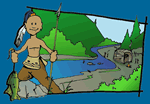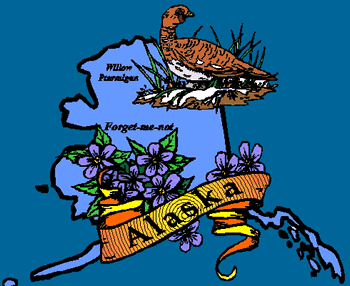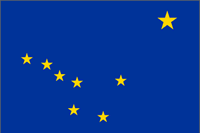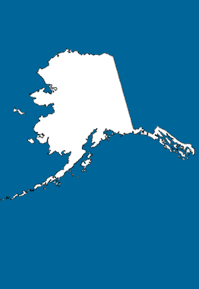 Economy:
Today, much of the money used to run the state of Alaska comes from the Trans-Alaska oil pipeline. When oil was discovered in Prudhoe Bay in 1968, it was not the first found in Alaska, but the quantity was astounding enough, and the demand for oil was high enough, to be worth building the pipeline, a project that took from 1974 to 1977. Construction of the pipeline brought many new people to Alaska. The workers were paid very well and given housing and food. Many more men than women came. Many of these new Alaskans decided to stay even after the pipeline was complete, having fallen in love with the natural beauty and outdoor recreation available.
The pipeline starts in Prudhoe Bay, on Alaska's "north slope" and ends at Valdez, about 800 miles to the south. At the end of the line, oil is pumped into tankers at the port of Valdez. In 1989, the waters of Prince William Sound off Valdez suffered the worst oil spill in U.S. history when one of the tankers hit a reef.
In order for all Alaskans to share in the wealth from the pipeline, an agreement was reached at the construction of the pipeline to set up a "Permanent Fund" for all Alaskan residents to receive a share of the proceeds each year. Alaska's teenagers who save wisely can use this money to fund their college education.
Alaska's rich natural resources, including silver, gold, copper, natural gas, and endless acres of pristine wilderness, encourage the hearty to continue exploring ways to turn resource into income. The tourism industry, mostly during the summer months, brings more and more people to experience Alaska every year. It has become a very popular destination.
The largest city in Alaska is Anchorage with over 260,000 people, a city much like many in the lower 48. The rest of the people live in a few much smaller cities, towns of a few thousand, villages of less than 100, or in "the bush."
One unusual part of Alaska's economy is the number of residents who live by "subsistence," or by hunting, fishing, and finding their own food in "the bush" (the vast, rural portions of the state). Outside of the city of Anchorage, as many as 85% of people's food comes from subsistence. Many of the native villages have lived this way for centuries. Alaska's fishing and hunting is a rich resource. Farming, however, is trickier in this cold climate. Cold weather crops, such as potatoes and carrots do very well in the very long summer days and grow to be very large. Wheat, however, cannot grow in the short season. As a result, Alaska imports many kinds of food, including dairy products and produce, much of it from the western part of the U.S. and Canada.
Transportation is a major challenge in Alaska and has a great impact on the economy. Very large areas of the state have no roads connecting them to other places. There are more pilots per capita in Alaska than anywhere else, since the seaplane (and planes with skis) provide the only way to move supplies to much of interior Alaska. Since the snowmobile (or snow machine) replaced the dog sled, people often use this as a primary means of travel in winter, moving up and down long frozen rivers covered with snow. Winter also allows engineers to pave "ice roads" by freezing large amounts of water on the tundra to bring in large equipment for constructing drilling platforms or other larger industrial complexes. When the ice road melts, there is no sign of the intrusion by trucks.
In may places, Alaska's frozen rivers are the only "highways" to transport large, heavy items that cannot be flown in, such as a new car or refrigerator or lumber for construction. Yes, people may still use cars in the road within their villages, but they keep a supply of "spare parts" (old wrecks) handy since it is not possible to go to the local Ford dealer for a repair in the bush. A warm winter such as 2003 can make interior transportation impossible, since the ice is not thick enough to support trucks traveling upriver.
The Internet has changed Alaska. Every village has at least a satellite link to the Internet at the local school that is kept open for residents to use after school. Children of Alaska benefit from online learning opportunities, and the "closeness" of email and online shopping have connected the bush much more than in the past.
In the bush, the lodges along snow machine/dogsled trails provide a place to stay and a view of the Alaskan culture of independence. If you visit Alaska, be sure to stop in at a lodge by one of the lakes or rivers to meet real Alaskans. If you can only get there by plane or snow machine, you are in the right place. |









